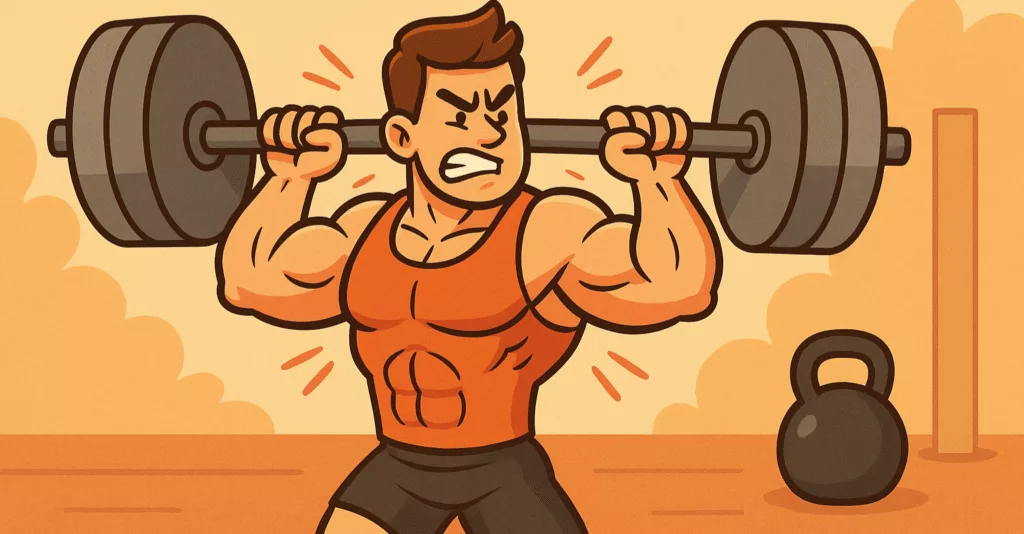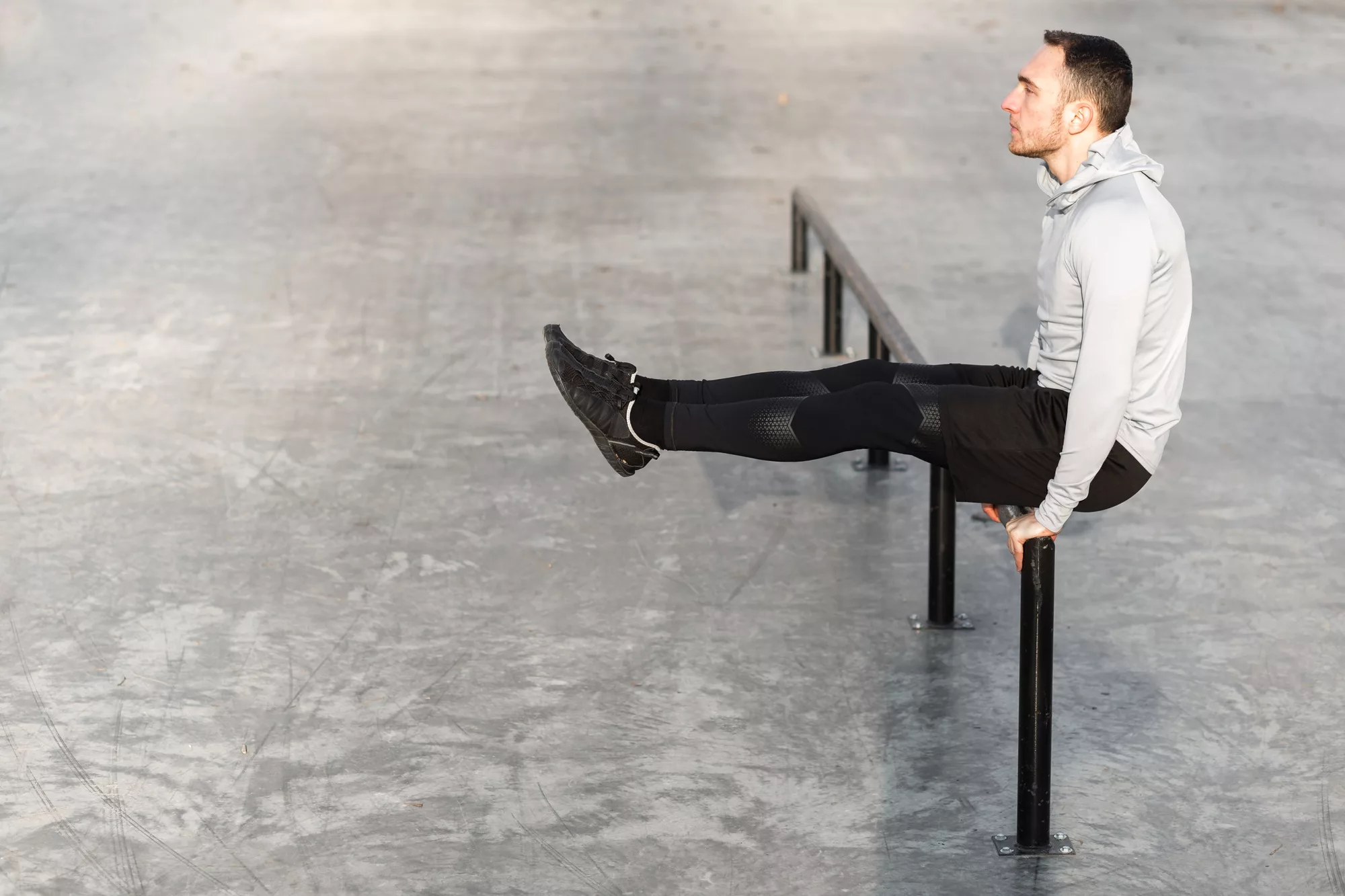Let’s be honest: these days, if you do calisthenics, it feels like you also need to become a mobility guru
Between sticks, bands, one-hour routines, Cossack squats with dumbbells, and passive stretching during every break… the idea is that the more open you get, the stronger you become.
But something weird happens.
You train hard for flexibility, then you go for straight-arm pressing, advanced push-ups, or ring support holds… and the strength is just gone.
You don’t feel the same shoulder pressure.
You lack explosiveness.
You have zero control.
And you think, “How is this possible? I move better now… but I perform worse?”
Well, you’re not alone.
Let’s break down what’s really happening.
When the mobility obsession made us lose the plot
In recent years, being “tight” has basically become an insult in the bodyweight training world.
As soon as someone has slightly locked-up shoulders or limited hip mobility, the label gets slapped on: “not functional.”
So we all started chasing flexibility like it was the key to becoming strong, agile, and unstoppable.
We dove into:
- Static stretching (holding a stretch for 30–60 seconds)
- Dynamic stretching (wide, controlled movements to “warm up” the joint)
- PNF (contract-relax techniques to expand joint range)
- Full-blown mobility routines for every limb
Basically, we opened up more and more in every direction.
Thinking, “The more open I am, the better I’ll get at skills.”
But guess what?
Often the opposite happens.
Your pressing loses punch.
Your holds become unstable.
Your movements lose reactivity.
And this doesn’t just happen to beginners.
I’ve seen the exact same problem in seasoned athletes with real strength, consistency, and training experience.
Muscles need tension, not just freedom of movement

To generate real force, you need something most people overlook: passive tension.
That’s the natural elastic resistance from your muscles, tendons, and fascia—even when you’re not actively contracting.
A kind of internal “spring” that stores energy and gives it back when needed.
When you overdo mobility, that tension decreases.
The result?
You lose explosiveness in key phases of movement.
A body that’s too loose can’t generate power when it counts.
You’ve got the range… but you’re inconsistent.
Example: if you only train the ability to bring your arms overhead with ease, but never build strength within that position, you’ll collapse when you drop into a deep overhead press.
A systematic review in Medicine & Science in Sports & Exercise (Kay et al., 2012) analyzed over 100 studies on acute static stretching.
The outcome?
Short stretches (under 30–40 seconds) have minimal impact.
But once you go past 60 seconds, maximal strength and explosive power drop significantly—no matter the muscle group or movement type.
Why?
Because prolonged stretching lowers passive tension and neuromuscular activation—exactly what you need to drive force through the core of a movement.
Your nervous system protects you… even from yourself

Your brain doesn’t care how mobile you are.
It cares about safety.
If it senses instability in a joint position, it does something very simple: it cuts back muscle activation.
It’s protecting you.
It says, “This position isn’t stable. Better slow down.”
So even if you feel more “open,” you feel less powerful.
It’s not a fitness issue.
It’s just that your nervous system doesn’t trust the new range—yet.
You need time.
But more than anything, you need control.
When stretching makes you weaker

At one point, I basically turned into a semi-contortionist.
I had long routines every morning: pancake, bridge, loaded shoulder extension, Jefferson curl… everything picture-perfect.
But then I’d go train.
And I’d feel soft, unstable, and disconnected.
That sense of “solid movement” was gone.
The drive didn’t come with any punch.
I had gained degrees of motion… but lost structural strength.
And that’s essential for creating joint torque.
It’s not enough to reach a position.
You need to own it.
Mobility and strength: they have to grow together
Mobility is important—of course.
But it has to be functional.
You need to work on:
- Improving the specific ranges you need (pike, bridge, planche…)
- Adding active isometrics within those new ranges
- Training control under load
If all you do is open up, without building stability…
You’re asking for injury.
And slowing down your progress.
RELATED:》》》 Is It Possible to Combine Calisthenics and Weight Lifting in a Single Workout?
My approach today: less stretching, more function
I don’t spend an hour stretching anymore.
I do 10–15 minutes of targeted mobility, based on that day’s workout.
Then light activations (scapula, supports, wall drills).
Then straight into real pressing: advanced push-ups, vertical pushes, tempo-controlled exercises with pauses.
Mobility has become a tool.
Not the end goal.
If you do too much of it, strength evaporates.
Sometimes mobility is just an excuse
We hide inside stretching because it feels like training.
You sweat, it burns, it takes effort… but there’s no real confrontation with fatigue.
You don’t fail.
You’re not tested.
It’s an activity that seems hard, but it’s cozy.
Sure, it’s Instagrammable.
But it’s also a classy way to dodge the hard stuff.
The part where your arms shake and your grip starts slipping.
3 signs you’re overdoing it
It’s not always obvious when mobility is backfiring on your strength.
Here are three clear red flags:
- Your strength drops mid-movement, not at the extremes
Push-ups feel weaker. Bodyweight pressing loses bite.
If you’re missing explosiveness in the middle of the move, that’s a warning sign. - You feel unstable during execution
If every rep needs a posture reset, you probably have more range than control. - You need endless activation just to “feel” your muscles
If your triceps only wake up after 25 minutes of warm-up… something’s off.
The difference between passive and active mobility (and why it matters)
Passive: range reached without active effort. Stick, band, external assistance.
Active: range controlled by you, with strength and precision.
In calisthenics, passive range is never enough.
You need to control every position with your own body.
It’s not about how open you get…
It’s about how strong you are inside that range.
How much mobility do you really need?
Here’s a concrete guide:
🔹 Before the workout
Dynamic stretching, 5–8 minutes.
Targeted areas.
Active movements (e.g., shoulder CARs, scapular reach).
🔹 After the workout (optional)
Static stretching only if absolutely needed.
Max 10–12 minutes, just for leftover tension.
🔹 Extra sessions (1–2 per week)
Mobility work on critical ranges.
Always paired with active strength and control.
Your body adapts to what you do often.
If all you train is stretching… you lose solidity.
When stretching slows you down
Clear signs you’re overdoing it:
- You feel “empty” after every session
- You need more and more time to re-activate
- Your strength is going down, not up
- You’re using mobility as a hiding place—even when it’s not needed
Stretching should free you up—not drain your tone.
A functional body is stable, not randomly flexible.
Example of a balanced week
If you train 4–5 times a week, here’s a realistic structure:
Monday – Vertical pushing + active shoulder mobility
Tuesday – Pulling work + dynamic scapular mobility
Wednesday – Rest or myofascial release + breathing
Thursday – Core, isometrics, and critical ranges (like active overhead)
Friday – Full-body work + supports + timed finishers
Mobility shouldn’t be a separate block.
It needs to be part of your training.
The role of Time Under Tension (TUT)
Real strength in a new range comes from spending time in that range.
Time Under Tension is the most effective way to lock in control in unfamiliar positions.
Examples:
- Hold the bottom of a vertical push for 10–15 seconds
- Lower slowly from a straight-arm push-up
- Freeze the movement in a hard position and resist
That’s how you turn mobility into strength.
RELATED:》》》 Starting Calisthenics at 30: Too Late or Just the Right Time?
Conclusion
You don’t need to become stiff—or bendy—at all costs.
You need to become effective.
Open up as much as needed.
But get stable inside that range.
Don’t chase extreme mobility just for looks.
Every degree of movement you earn should become a new lever in your training.
Don’t get tricked by stretching for stretching’s sake.
Train mobility only if it helps you push harder—not just if it makes you look more “prepared.”
At the end of the day, you train to become strong.
Not just flexible.

